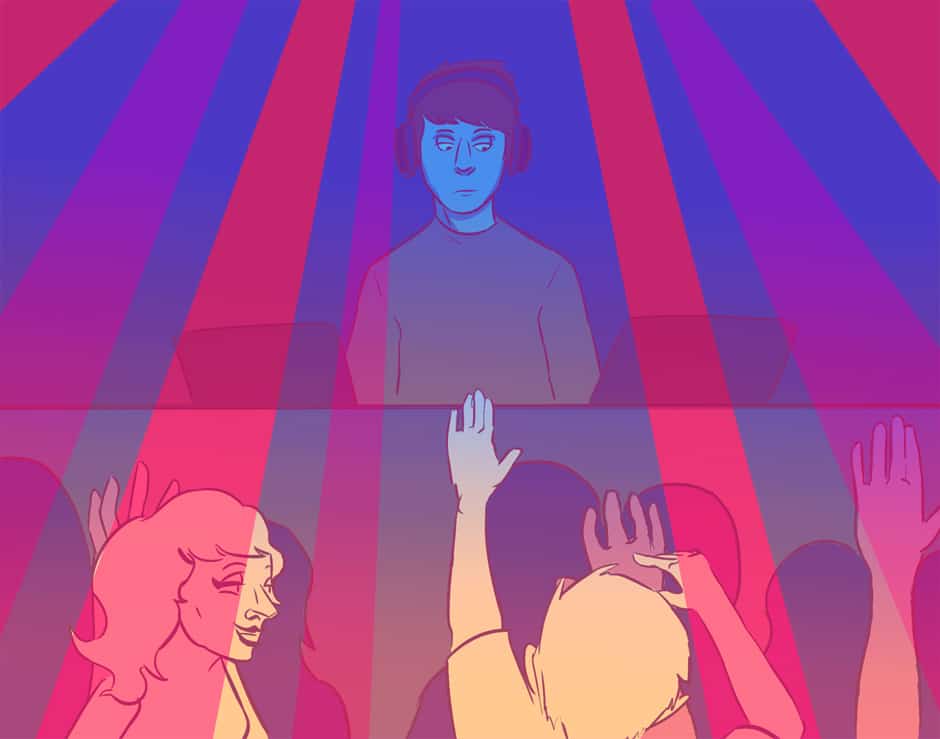In the past few years electronic dance music (EDM) has had a significant resurgence in mainstream pop culture. Despite the genre’s existence since the 1980s, artists like Avicii, Diplo, Swedish House Mafia and Deadmau5 have lead the charge in repopularizing the genre. Heavy drug use that was synonymous with raves in the 1980s and 1990s has only seemed to grow alongside the EDM culture, creating controversy with giant shows of thousands of people partaking in illicit drugs and substances.
This past summer alone, Toronto’s VELD music festival had two drug related deaths as well as 13 hospitalizations. At Mad Decent Block Party in Maryland, Virginia, two people died and 20 people were hospitalized.
Soon after these events, EDM artists began to speak out against their risk-taking, party-going audiences, and questioning of EDM music, versus EDM culture.
Is the drug use really as intense as the media has made it out to be? Are EDM audiences just “crowds of fucked up kids,” as the artist Flume recently suggested?
After the deaths at the Mad Decent Block Party, artist Diplo sided with his management on the decision to ban kandi — colourful handmade bracelets made from pony-beads – much to the anger of his fans. While kandi is now known for its association with PLUR culture (Peace, Love, Unity, and Respect), it wasn’t always a creative way to make innocent, good-natured friendships. Often drug deales wear a lot of kandi to catch buters attention.
“Drugs will happen one way or another, with or without kandi. I don’t think they’re to blame,” Allen Simans said, a EDM producer at York University student. “I think the deaths that happen at EDM festivals are the fault of both the victim and the venue. It is way too easy to get dehydrated at festivals. Especially when they confiscate your bottle caps…and it’s hot as hell outside, you’re in the middle of a field dancing surrounded by other people, there is only one water truck and the line-ups are half a mile long. Now imagine this devil’s playground when you’re on drugs such as dehydrating alcohol or MDMA/Ecstasy,” he added.
Scott* agreed, expressing that venues should – and probably will — restrict these shows to the 19+ crowd. “The reason that lots of artists have recently come out against the drug use at their concerts has a lot to do with not wanting to be connected to some of the emergencies and deaths that take place at their shows after overdosing. Venues are quickly coming to the same realization — it’s a massive legal liability to have children experimenting with drugs at concerts.”
While Simans and Scott agree that EDM shows are a “mixed bag” when it comes to the types of people who attend, Mitchell* comments that the drug use that’s associated with rave culture is quite accurate: “It’s a part of rave culture to use drugs, but it’s not necessarily connected to the music that’s being performed. Whether modern EDM exists or not, there will be raves, and those raves will continue to be drug-centric. It’s not the fault of the music.” On Flume’s comment that he “doesn’t like playing to crowds of fucked up kids,” Mitchell agrees to an extent — “ I agree that the kids who attend these shows are ‘fucked up,’ but I don’t attribute these problems to EDM itself. Once people get sick of the ‘three-drop, 128 beats-per-minute, four-on-the-floor, loud-as-hell’-song structure, there will be another genre to replace EDM, and the drug culture will continue to exist.”
If there’s one thing all three music connoisseurs can agree on, it’s that the rise of EDM into mainstream music has two things to thank – the crowds of these so-called “fucked up kids”, and the Internet. As Scott insightfully notes, “Tons of indie artists start off in coffee shops and consequently have the pleasure of playing to like minded crowds, but they never get their music heard by more than a few hundred people.”
*Names changed at students request


